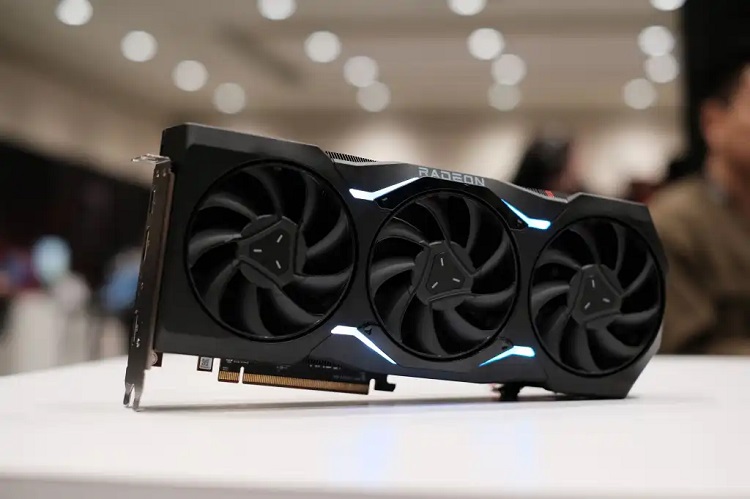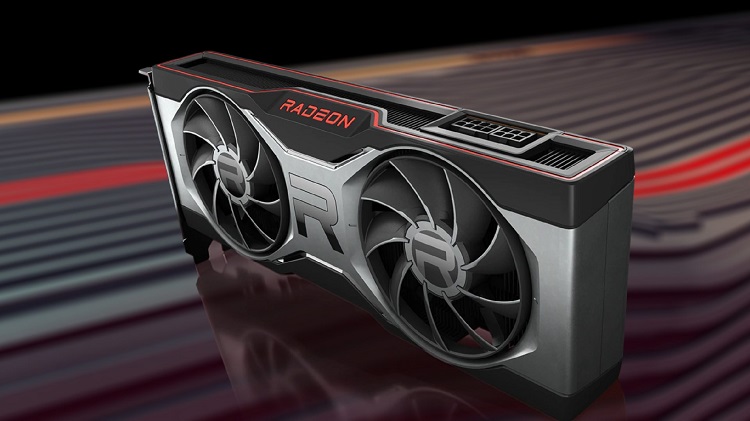
The Radeon RX 7000 series is AMD's answer to Nvidia's GeForce 40-series GPUs. It came out about two months into the new generation of graphics cards. Team Red's first cards in this generation are called the RX 7900 XTX and the RX 7900 XT. But even though they only differ by an X and $100 on paper, there are more differences than just the number of cores and clock speeds. This review is only about the RX 7900 XTX, we will tell you right away that it does well, even though Nvidia has a huge advantage in ray tracing.
AMD's new GPUs feature is a new design and the RDNA 3 architecture for the first time in a gaming GPU. The $999 RX 7900 XTX includes 96 RDNA 3 computing units, 24GB of GDDR6 memory, and 2.3/2.5 GHz game/boost clocks. 61 shader teraflops of computational power. Its closest opponent this generation (so far) is the $1,199 GeForce RTX 4080, which features 9,728 CUDA cores, 304 fourth-gen Tensor cores, and 76 third-gen RT cores, with a 2.5 GHz boost clock. You can't directly compare various designs; therefore, these numbers don't signify anything until we compare performance.
The RX 7900 XTX is a stylish, though simple, black metal card with silver and red accents (no RGB). It measures 287mm x 123mm and only takes up two slots, a comfort after Nvidia's three-slot behemoth. It has a three-fan cooling arrangement, which I found to be noisier than the RTX 4080 and 4090. It's not as noisy as a gaming laptop, but it's noticeable compared to the RTX 40-series cards' whisper-quiet cooling. I recorded a high of 67C at the beginning of benchmarking, which dropped to 55C after the fans started on.
The 7900 XTX is the first GPU supporting DisplayPort 2.1, allowing 4K with HDR at 120Hz or higher without compression. No monitors or TVs use this yet — everything uses DisplayPort 1.4 or HDMI 2.0/2.1 – but it future-proofs the card to be compatible when they do. Two of these ports are included, together with HDMI 2.1a and USB-C with DP 2.1.
The RX 7900 XTX has two 8-pin power connections, a nice change from Nvidia's new 16-pin 12VHPWR connector, which has melted. AMD recommends an 800W power supply for the card's 355W TDP. This is more than the RTX 4080's 320W TDP but less than the RTX 4090's 450W.

AMD Radeon RX 7900 XTX
RX 7900 XTX scores well in synthetic benchmarks. It falls short of the considerably more costly RTX 4090, yet it surpasses the RTX 4080 by a modest to moderate margin in 3DMark Fire Strike Ultra and Heaven Benchmark.
Nvidia dominates ray tracing synthetics. AMD scores 47.9 fps in 3DMark Ray Tracing and 12967 in 3DMark Port Royal, which is better than normal. These ratings put it on level with the RTX 3080 in ray tracing performance, which is still a very excellent graphics card but launched more than two years ago for $699. AMD's newest GPUs have half the ray tracing performance of Nvidia's.
The RX 7900 XTX performs well on typical rasterization workloads, but not in ray tracing or DLSS games. Most of our benchmarks at 1080p and 1440p are CPU-bound, so they don't reveal anything. The RX 7900 XTX defeated the RTX 4080 once, tied it once, and lost twice in 4K testing.
Matching or surpassing a more expensive card is remarkable, but ray tracing and DLSS may be brutal. In Metro Exodus Enhanced Edition, the 7900 XTX achieved just 42 fps, barely over half the score of the RTX 4080. AMD doesn't have DLSS or Nvidia's "frame-generating" DLSS 3, but it has FSR. Cyberpunk 2077 features DLSS 3 and FSR 2.1.
AMD and Nvidia's GPUs must depend on upsampling tech, as none of them reach 60 fps without DLSS or FSR. AMD believes FSR 2 Quality mode will give equivalent or greater picture quality than native while boosting speed. It utilizes 1440p input to upscale to 4K. Performance mode seeks native picture quality for a considerable performance increase, upscaled from 1080p to 4K. Without comparing visuals, much difference is not seen between Quality and Performance, however fps affected fluidity of play.
DLSS On/Frame Generation Off vs. FSR Performance mode is more intriguing. The RX 7900 XTX averages 57 fps, which is below the 60-fps objective but still playable. The RTX 4080 maintains 73 fps in the same test, while Frame Generation boosts it to 108.
While AMD has gained some distance on Nvidia, Team Green is still the clear pick for the greatest visual quality and performance in the current games.
In terms of "frames per dollar," the RX 7900 XTX is the obvious victor (aside from in Metro Exodus, which as mentioned suffers from the burdens of ray tracing and the lack of DLSS on the AMD card). If you're on a budget, this may be a good alternative for your next PC.
Pros
Cons
AMD's first RDNA 3 graphics cards do a great job, and the RX 7900 XTX is a strong competitor, especially when compared to Nvidia's newest and best GeForce RTX 40-series cards in terms of price and performance. Nvidia still has the best technology for ray tracing and games that benefit from DLSS, and it's not even close. However, AMD's FSR technology has helped close the gap, and in pure rasterization workloads, it often beats Nvidia. Nvidia is still the best if you want the best graphics and performance, but AMD is hard to beat if you want good old-fashioned frames at prices that are a bit more reasonable.
The RX 7900 XTX and XT have the latest and best RDNA 3 architecture from AMD, which gives them great rasterization performance. Ray tracing is still a second-class citizen, and even though it's faster than the last generation, AMD's DXR games can't compete with Nvidia's, and that's not even counting DLSS, which is still used a lot.